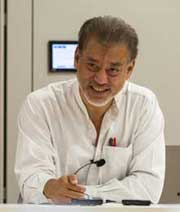KUALA LUMPUR, Malaysia, Jul 8 (IPS) – Most multilateral financial institutions have long encouraged developing countries to borrow commercially, but not from China. Now borrowers are stuck in debt traps with little hope of escape.

The 2008 global financial crisis and the Great Recession have recently been exacerbated by the Covid-19 pandemic, interest rate hikes initiated by the US Federal Reserve Bank and escalating geopolitical economic warfare.
After the Reagan-inspired tax cuts, ostensibly to stimulate more private investment, budget deficits have grown. Instead of facilitating a rapid recovery, more austerity is now being implemented, just as in the 1980s.
After fiscal expansion averted the worst in 2009, unconventional monetary policy measures, mainly ‘quantitative easing’ (QE), took over. The European Central Bank (ECB) followed the US Fed’s QE lead for more than a decade.
The lower interest rates of QE encouraged more borrowing, as more credit became available and affordable. With rich countries offering less concessional financing, developing countries had little choice but to turn to the markets for loans.
Countercyclical spending in a recession requires government borrowing, which QE made more accessible and cheaper. The resulting borrowing spree has since returned to haunt these economies since 2022-23, when interest rates peaked.
Pushing blame
With slogans such as “from billions to trillions,” the World Bank urged developing country governments to borrow more on market terms to meet their financing needs for the SDGs, climate and the pandemic.
With capital accounts now open, many private investors have long sought “safety” abroad. But when lucrative direct investment opportunities beckoned, for example in India, some “capital flight” returned as foreign investment, usually favored and protected by host governments and international treaties.
Easier credit availability on near concessional terms, thanks to QE, made more, often innovative, financialization possible. Blended finance and other such innovations promised to ‘de-risk’ private investment, especially from abroad.
Despite less bank lending than in the 1970s, the debt burden increased with more market-based debt. However, such debt burdens did not allow the real economy to grow much despite much private technological innovation.
Borrowing sour
The US Fed began raising interest rates in early 2022, blaming inflation on a tight labor market. As interest rates rose sharply, the debt burden grew.
Thus, government borrowing worldwide has been restricted when more was needed. Rising interest rates have dampened demand, including private and government spending on investment and consumption.
But recent economic contractions have been driven primarily by supply-side disruptions. The second Cold War, the COVID-19 pandemic and geopolitical economic aggression have disrupted supply lines and logistics.
Raising interest rates dampens demand but does not address supply-side distortions. Incorrect policy measures have not helped, as such anti-inflationary measures have reduced jobs, incomes, spending and demand worldwide.
For some it’s worse
Since the global financial crisis of 2008, successive US presidents have successfully maintained full employment. All central banks are committed to ensuring financial stability, but the US Fed also has an almost unique second mandate to maintain full employment.
Developing countries now face far more constraints on what they can do. Most are heavily indebted with little policy space. With more financing from markets, the procyclical bias is more pronounced.
Vulnerable developing countries feel they have little choice but to surrender to the market. Poverty in the poorest countries has not declined for almost a decade, while food security has not improved for even longer.
Worse, geopolitics has put a lot of pressure on the Global South to spend more on the military. But the most recent food price increases were due to speculation and ‘artificial’ rather than real shortages.
Bad, worst off
The potential for problems increases with debt burdens. Debt stress has increased dramatically in the past two years, especially for developing countries that borrow heavily in major Western currencies.
Although the reasons why central banks raise interest rates are rarely mentioned, interest rates have not fallen and no money has flowed back to developing countries.
For at least a decade, the US has increasingly warned developing countries against borrowing money from China, despite its low interest rates compared to most other sources of credit, except Japan.
As a result, China’s lending to developing countries, particularly in sub-Saharan Africa, has fallen since 2016. By 2022, poorer countries had borrowed far more from commercial sources. But such private capital has since fled to the US and other Western markets that offer high returns with more certainty.
Capital flight from developing countries, particularly the poorest, followed because much less money flowed through markets to the poorest developing countries. With fewer financing options, the poorest countries were the most vulnerable.
Negotiating with multiple private creditors in markets, rather than through intergovernmental arrangements, has proven much more difficult. With much more private market financing, such financiers will not take instructions from governments unless forced to do so.
There is thus little on the horizon that offers any hope of significant debt relief, let alone a strong recovery and improved prospects for sustainable development in the global South.
IPS UN Office
Follow @IPSNewsUNBureau
Follow IPS News UN Bureau on Instagram
© Inter Press Service (2024) — All rights reservedOriginal source: Inter Press Service







